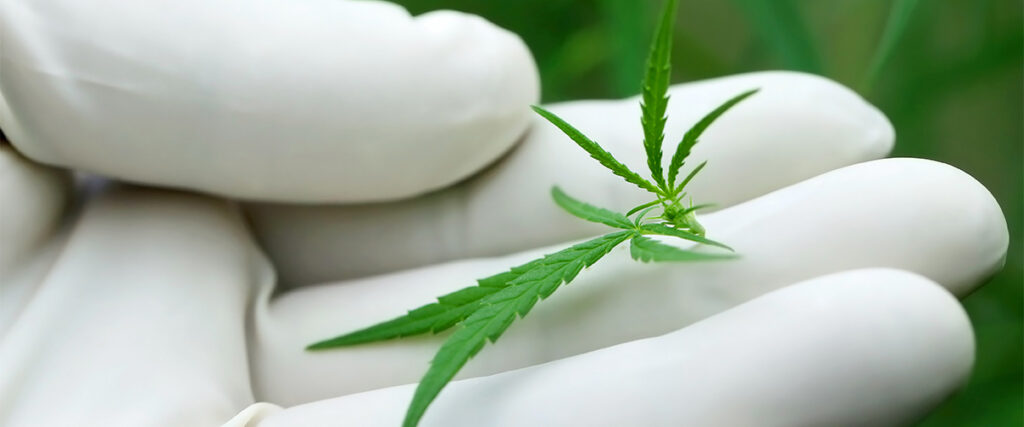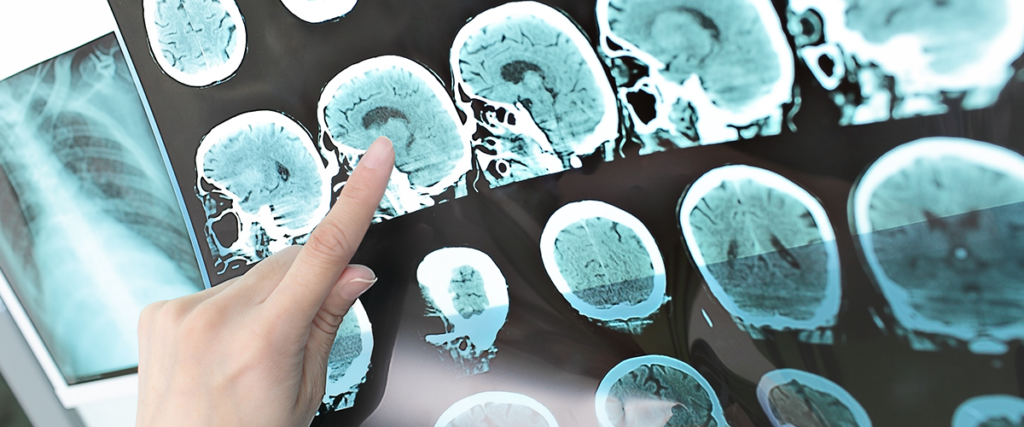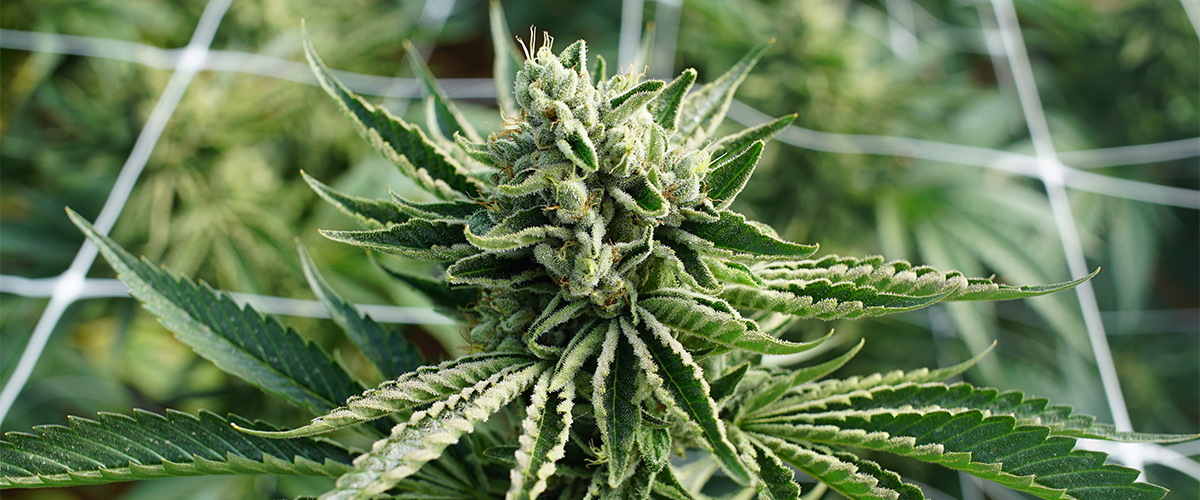While much is still unknown about CBC, one of over 100 cannabinoids found in cannabis and medical marijuana, the limited research that has been done shows potential for several beneficial health effects.
CBC, or cannabichromene, is among the most abundant of the more than 100 cannabinoids found in the Cannabis sativa L. plant.
While CBC doesn’t boast the recognition of more recognizable and well-studied cannabinoids like CBD and THC, the non-psychoactive compound has demonstrated various effects that indicate therapeutic promise for several conditions and symptoms.
What is CBC?
Cannabis-derived cannabinoids like CBC are a diverse class of compounds that interact with the body’s endocannabinoid system to offer a broad range of effects designed to regulate and encourage balance in our systems. CBC is among the most abundant of the naturally-occurring phytocannabinoids in cannabis, and in some strains is the second most abundant cannabinoid.7
First discovered in 1966, CBC shares a similar molecular formula as CBD and THC.6 The atoms within each of their molecular structures, however, are arranged in slightly different ways, causing the compounds to interact with the body’s receptors differently to produce various effects.
Like CBD and THC, cannabis-derived CBC is produced through an enzymatic conversion of the precursor compound, cannabigerol (CBG). The enzyme known as CBCA synthase reacts with CBG to form cannabichromenic acid (CBCA), which when decarboxylated – or exposed to heat – turns into CBC.
CBC is a non-psychoactive cannabinoid, which means it does not cause a euphoric response when consumed.

The Effects and Benefits of CBC: What Research Has Found
While the body of research investigating the effects and medicinal benefits of CBC is lacking in volume, the findings in the studies that have been done indicate exciting therapeutic potential.
CBC has shown to have various potential medical applications. Here’s a look at the effects of CBC that researchers have so far discovered:
Antidepressant
CBC was shown in an animal study to provide significant antidepressant-like effects when administered on its own, when combined with THC, and when combined with CBD. The researchers concluded that CBC and the other cannabinoids may “contribute to the overall mood-elevating properties of cannabis.”5
Pain Relieving
CBC has also shown potential for reducing pain in animal models. In one study, a team of Italian researchers found that CBC combined with CBD was effective for reducing the pain response, and concluded that “these compounds might represent useful therapeutic agents with multiple mechanisms of action.”9
Encourages Brain Growth
Evidence indicates that CBC helps promote neurogenesis, a process in which new brain cells are created. These brain cells are are responsible for memory and learning, and researchers have found that CBC can encourage neurogenesis and increase the viability of brain cells.14 This may suggest that medical marijuana CBC could be beneficial for those diagnosed with conditions like dementia and Alzheimer’s disease, in which neurogenesis is altered.

Anti-Bacterial and Anti-Fungal
CBC has demonstrated “strong” antibacterial and antifungal effects, showing it can be beneficial in the fight against bacteria like E. coli and staph.15 A more recent study found that CBC and other cannabinoids were effective against methicillin-resistant Staphylococcus aureus (MRSA), which is often able to evade traditional antibiotics.1
Anti-Acne
Among the most recent discoveries about cannabis-derived CBC is that it may be beneficial for treating symptoms of acne. Acne is often associated with excessive sebum (oil) production, and a recent study found CBC to be particularly useful for reducing the production of sebum by sebaceous glands.
After examining the effects of multiple cannabinoids, the researchers concluded that CBC and a couple other compounds “show promise to become highly efficient, novel anti-acne agents.”11
Anti-Inflammatory
Inflammation is associated with a wide array of health conditions such as arthritis, cardiovascular disease, and cancer. One study found that when administered alone, CBC was effective at reducing inflammation in a dose-dependent response. When combined with THC, CBC’s anti-inflammatory properties were amplified.3
Anti-Cancer
One of the most intriguing findings about CBC is its potential anti-proliferative effect, meaning it may help prevent the growth of cancerous tumors. CBC has shown to help inhibit the uptake of Anandamide, an endocannabinoid synthesized by the body that inhibits the growth of cancerous cells. This effect allows Anandamide to remain in the body’s system and continue its efforts at reducing cancer.4

Anti-Diarrhea
Early evidence also suggests that CBC has the potential for managing diarrhea, or bowel hypermotility. Investigating CBC’s effects on mice, researchers found that the compound reduced inflammation-induced hypermotility without causing hypomotility (constipation), as with most traditional anti-diarrheal medications.8
How CBC Interacts with the Body’s Natural Systems
CBC likely elicits its effects by influencing the performance of the body’s endocannabinoid system, a signaling network tasked with regulating our functions and keeping them in balance. The endocannabinoid system has two types of cannabinoid receptors, CB1 and CB2. Cannabinoids interact with these receptors to stimulate a variety of chemical responses that are designed to keep us in homeostasis.
CBC actually has low affinity for CB1 or CB2 receptors, which means it doesn’t bind effectively to either of them.2,3 Instead, CBC has been shown to have a greater influence by interacting with a number of other receptors in the body, including vanilloid receptor 1 (TRPV1) and transient receptor potential ankyrin 1 (TRPA1).9,13
In activating these receptors, CBC increases levels of naturally synthesized endocannabinoids in the body by inhibiting the natural processes that degrade them. In essence, CBC primarily has an indirect effect on the endocannabinoid system and its effort to regulate our functions.
Learn More about Cannabinoids
CBC in medical marijuana is one of many cannabinoids that has demonstrated therapeutic potential. You can learn more about the research findings around other cannabinoids such as CBD and THC through our education page.
References:
- Appendino, G., Gibbons, S., Giana, A., Pagani, A., Grassi, G., Stavri, M., Smith, E., and Rahman, M.M. (2008, August). Antibacterial cannabinoids from Cannabis sativa: a structure-activity study. Journal of Natural Products, 71(8), 1427-30. Retrieved from http://pubs.acs.org/doi/abs/10.1021/np8002673.
- Aizpurua-Olaizola, O., Soydaner, U., Ozturk, E., Schibano, D., Simsir, Y., Navarro, P., Etxebarria, N., and Usobiaga, A. (2016). Evolution of the cannabinoid and terpene content during the growth of Cannabis sativa plants from different chemotypes. Journal of Natural Products, 79(2), 324-331. Retrieved from http://pubs.acs.org/doi/abs/10.1021/acs.jnatprod.5b00949.
- DeLong, G.T., Wolf, C.E., Poklis, A., and Lichtman, A.H. (2010, November 1). Pharmacological evaluation of the natural constituent of Cannabis sativa, cannabichromene and its modulation by (9)-tetrahydrocannabinol. Drug and Alcohol Dependence, 112(1-2), 126-33. Retrieved from https://www.ncbi.nlm.nih.gov/pmc/articles/PMC2967639/.
- De Petrocellis, L., Melck, D., Palmisano, A., Bisogno, T., Laezza, C., Bifulco, M., and Di Marzo, V. (1998, July 7). The endogenous cannabinoid anandamide inhibits human breast cancer cell proliferation. PNAS, 95(14), 8375-8380. Retrieved from https://www.ncbi.nlm.nih.gov/pmc/articles/PMC20983/.
- El-Alfy, A.T., Ivey, K., Robinson, K., Ahmed, S., Radwan, M., Slade, D., Khan, I., ElSohly, M., and Ross, S. (2010, June). Antidepressant-like effect of delta9-tetrahydrocannabinol and other cannabinoids isolated from Cannabis sativa L. Pharmacology, Biochemistry, and Behavior, 95(4), 434-42. Retrieved from https://www.ncbi.nlm.nih.gov/pmc/articles/PMC2866040/.
- Gaoni, Y., and Mechoulam, R. (1966). Cannabichromene, a new active principle in hashish. Chemical Communications, 1, 20-1. Retrieved from http://pubs.rsc.org/en/content/articlelanding/c1/1966/c19660000020 – !divAbstract.
- Holley, J.H., Hadley, K.W., and Turner, C.E. (1975, May). Constituents of Cannabis sativa L. XI: Cannabidiol and cannabichromene in samples of known geographical origin. Journal of Pharmaceutical Sciences, 64(5), 892-95. Retrieved from http://www.sciencedirect.com/science/article/pii/S0022354915401959.
- Izzo, A.A., Capasso, R., Aviello, G., Borrelli, F., Romano, B., Piscitelli, F., Gallo, L., Capasso, F., Orlando, P., and De Marzo, V. (2012, June). Inhibitory effect of cannabichromene, a major non-psychotropic cannabinoid extracted from Cannabis sativa, on inflammation-induced hypermotility in mice. British Journal of Pharmacology, 166(4), 1444-60. Retrieved from https://www.ncbi.nlm.nih.gov/pmc/articles/PMC3417459/.
- Maione, S., Piscitelli, F., Gatta, L., Vita, D., De Petrocellis, L., Palazzo, E., de Novellis, V., and Di Marzo, V. (2011, February). Non-psychoactive cannabinoids modulate the descending pathway of antinociception in anaesthetized rats through several mechanisms of action. British Journal of Pharmacology, 162(3), 584-96. Retrieved from https://www.ncbi.nlm.nih.gov/pmc/articles/PMC3041249/.
- Nakajima, J., Nakae, D., and Yasukawa, K. (2013, August). Structure-dependent inhibitory effects of synthetic cannabinoids against 12-O-tetradecanoylphorbol-13-acetate-induced inflammation and skin tumour promotion in mice. Journal of Pharmacy and Pharmacology, 65(8), 1223-1230. Retrieved from http://onlinelibrary.wiley.com/wol1/doi/10.1111/jphp.12082/full.
- Olah, A., Markovics, A., Szabo-Papp, J., Szabo, P.T., Stott, C., Zouboulis, C.C., and Biro, T. (2016, September). Differential effectiveness of selected non-psychotropic phytocannabinoids on human sebocyte functions implicates their introduction in dry/seborrhoeic skin and acne treatment. Experimental Dermatology, 25(9), 701-7. Retrieved from http://onlinelibrary.wiley.com/doi/10.1111/exd.13042/abstract.
- Ramikie, T.S., Nyilas, R., Bluett, R.J., Gamble-George, J.C., Hartley, N.D., Mackie, K., Watanabe, M., Katona, I., and Patel, S. (2014, March 5). Multiple mechanistically distinct modes of endocannabinoid mobilation of central amygdala glutamatergic synapses. Neuron, 81(5), 1111-25. Retrieved from https://www.ncbi.nlm.nih.gov/pmc/articles/PMC3955008/.
- Romano, B., Borrelli, F., Fasollini, I., Capasso, R., Piscitelli, F., Cascio, M.G., Pertwell, R.G., Coppola, D., Vassallo, L., Orlando, P., Di Marzo, V., and Izzo, A.A. (2013, May). The cannabinoid TRPA1 agonist cannabichromene inhibits nitric oxide production in macrophages and ameliorates murine colitis. British Journal of Pharmacology, 169(1), 213-229. Retrieved from https://www.ncbi.nlm.nih.gov/pmc/articles/PMC3632250/.
- Shinjyo, N., and Di Marzo, V. (2013, November). The effect of cannabichromene on adult neural stem/progenitor cells. Neurochemistry International, 63(5), 432-437. Retrieved from http://www.sciencedirect.com/science/article/pii/S0197018613002106.
- Turner, C.D., and Elsohly, M.A. (1981, August-September). Biological activity of cannabichromene, its homologs and isomers. Journal of Clinical Pharmacology, 21 (8-9 Suppl), 238S-291S. Retrieved from http://onlinelibrary.wiley.com/doi/10.1002/j.1552-4604.1981.tb02606.x/pdf.
- Whyte, L.S., Ford, L., Ridge, S.A., Cameron, G.A., Rogers, M.J., and Ross, R.A. (2012, April). Cannabinoids and bone: endocannabinoids modulate human osteoclast function in vitro. British Journal of Pharmacology. 165(8), 2584-97. Retrieved from https://www.ncbi.nlm.nih.gov/pmc/articles/PMC3423262/.
- Wirth, P.W., Watson, E.S., El Sohly, M., Turner, C.E., and Murphy, J.C. (1980, June 9). Anti-inflammatory properties of cannabichromene. Life Sciences, 26(23), 1991-5. Retrieved from http://www.sciencedirect.com/science/article/pii/0024320580906311.






